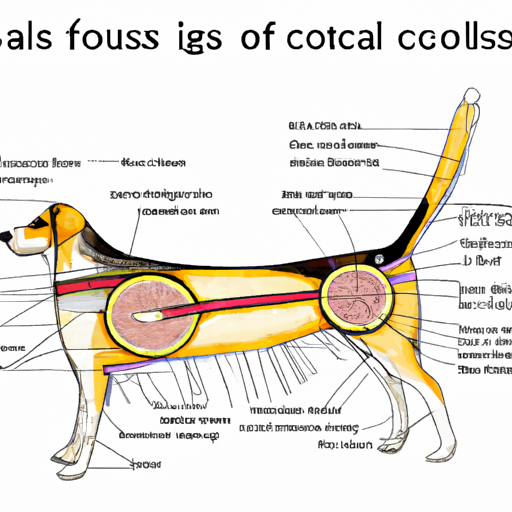As a caregiver, you’re always looking for ways to better understand and care for your pets. In this article, we’ll delve into the makeup of a dog’s tail. By the end, you’ll have a comprehensive understanding of what your dog’s tail is made of, how it functions, and why it’s so vital to their overall well-being.
H2: The Anatomy of a Dog’s Tail
Just like the rest of their body, a dog’s tail is a complex structure. It’s essentially an extension of their spine, consisting of a series of small bones known as vertebrae. Here’s a simple breakdown:
- Caudal Vertebrae: These are the specific bones that make up the tail, ranging from 5 to 23 in number, depending on the breed.
- Muscles and Tendons: Surrounding the vertebrae are muscles and tendons that enable mobility.
- Nerves: The tail also contains nerves that contribute to control and sensation.
- Skin, Hair, and Glands: The outer layer of the tail includes skin, hair, and glands, which contribute to its appearance and sensory function.
H2: The Role of a Dog’s Tail
A dog’s tail serves many important functions. Here are a few:
- Communication: Dogs use their tails to express emotions and intentions. For example, a wagging tail usually indicates happiness or excitement, while a tucked tail can signify fear or submission.
- Balance: When running or turning quickly, dogs use their tails for balance, much like a tightrope walker uses a balance beam.
- Swimming: For breeds that are adept swimmers, their tail can serve as a rudder, helping them navigate through water.
H2: Common Tail Types in Dogs
Different breeds have different tail types. Here are a few examples:
| Breed | Tail Type |
|---|---|
| Siberian Husky | Sickled Tail |
| English Bulldog | Screw Tail |
| Beagle | Saber Tail |
| Greyhound | Whip Tail |
H2: Tail Health and Care
As a caregiver, it’s essential to monitor your dog’s tail health. Look out for signs of discomfort, such as excessive chewing or biting at the tail, which could indicate a problem. Regular grooming can also help prevent issues like matting and skin infections.
H2: Debunking Tail Myths
There are many misconceptions about dog tails. For example, some people believe that a wagging tail always means a happy dog. However, the position and movement of the tail can indicate a range of emotions, not just happiness.
Frequently Asked Questions
Q: Can a dog break its tail?
A: Yes, dogs can break their tails, usually as a result of trauma. If you suspect a broken tail, it’s important to seek veterinary attention immediately.
Q: What is ‘tail docking’?
A: Tail docking is a controversial practice of removing a puppy’s tail, often for breed standards or cosmetic reasons. It’s illegal in many places due to animal welfare concerns.
Q: Is a dog’s tail bone similar to a human spine?
A: Yes, a dog’s tail bone structure is similar to the human spine, consisting of vertebrae, nerves, and muscles. However, humans have fewer caudal vertebrae compared to dogs.
Q: Why does my dog chase its tail?
A: Tail chasing can be a form of play, but excessive tail chasing could be a sign of a health or behavioral problem. It’s best to consult a vet if you’re concerned.
Remember, understanding your dog’s tail is just one way you can better care for your pet. As a caregiver, your curiosity and empathy make all the difference in your furry friend’s life.



